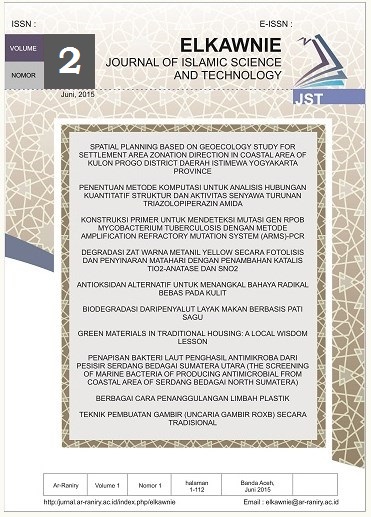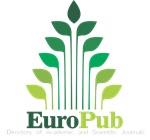Sains, Teknologi, Dan Nilai-Nilai Moral
DOI:
https://doi.org/10.22373/ekw.v2i2.2657Keywords:
sains, teknologi, muslimAbstract
This article explains about sciences, technology its relation to moral values. The existence of sciences and technology seems to be more beneficial for human beings in implementing their activities in their daily life. It is suffice to say that sciences and technology can reduce human involvement in doing something. It can help mankind from working hard. On the one other hand, some people say that sciences and technology will be dangerous for human beings, for examples, nuclear weapons, chemical weapons, tanks, scud, and other sophisticated guns or weapons which are produced by mankind exclusively for massacring and killing enemies----human beings. Therefore, sciences and technology must be controlled by those who have moral values and religious teachings. Those who are behind the sophisticated technology should be inculcated moral values into their heart and mind. Actually, Islam is not against development and modern technology but it supports and facilitates them as long as it is beneficial for human beings. We do not have to put a blame on sciences and technology for the Muslims scholars and Muslims scientists themselves had given sAl-Ghazali, Ibnu Sina, Ibnu Rusyd, Ibnu Khaldun, Al-Tabari, Al-Kindi, Al-Jabeer, Al-Khawarizmi, Ibnu Badjah, Baiquni, Al-Farabi, Al-Razi, Omar Khayam, dan Al-Mas’udi toward modern sciences and particularly to the West (Andalusia). They had been contributing sciences and knowledge to the people both in the East and in the West which were introduced by the kingdom of Bani Abbasiyah and Bani Umayyah. Historically, Islam had been contributing sciences and technology to the Europe for more than five centuries. Unfortunately, when non-Muslims conquered Muslims countries they gave two choices for Muslims---becoming Christians or killed! Most of them were killed and some of them escaped to North Africa and Middle East. All muslims schools and libraries were burned by the conquerors. This was the worst circumstances faced by Muslims in Andalus (Spain), Bosnia Herzegovina, Kossovo, Myanmar and Iraq.References
Aidit Ghazali. (1990). Development : An Islamic Perspective.
Petaling Jaya, Selangor Darul Ehsan, Malaysia: Pelanduk
Publications (M). Sdn. Bhd.
Arnold, Sir Thomas Walker dan Guillaume, Alfred (eds.) (1931).
The Legacy of Islam (Legacy series. Oxford: Clarendon
Press.
Lihat Ferry Kisihandi, “Penjualan Senjata AS ke Asia Naikâ€,
Republika, Kamis 3 Januari 2013.
Muhammad AR. (2010). Bunga Rampai Budaya, Sosial, dan
Keislaman. Jogyakarta: Arruz Media.
Muhammad AR. (2003). Pendidikan di Alaf Baru: Rekonstruksi atas Moralitas Pendidikan. Yogyakarta: Prismasophie.
Mehdi Nakosteen. (2003). Kontribusi Islam atas Dunia Intelektual Barat: Deskripsi Analisis Abad Keemasan Islam. Diterjemahkan oleh Joko S. Kahhar dan Supriyanto Abdullah. Surabaya: Risalah Gusti. Halaman ries. Oxford:
Miarso, Yusufhadi. (2007). Menyemai Benih Teknologi
Pendidikan. Jakarta: Kencana.
M. Hasbi Amiruddin. (2014). Revolusi Saintifik Iran dan Martabat
Umat Islam Dunia. Banda Aceh. LSAMA.
Nagel, Ernest. (1979). The Structure of Science: Problems in the Logic of Scientific Explanation. IIndianapolice: Hackett Publishing Company.
Syaikh Abu Bakar Al-Jazairi. (2003). Mengenal Etika dan Akhlak
Islam. Jakarta: Lentera, hlm. 12
Mehdi Nakosteen. (2003). Kontribusi Islam atas Dunia Intelektual Barat: Deskripsi Analisis Abad Keemasan Islam. Diterjemahkan oleh Joko S. Kahhar dan Supriyanto Abdullah. Surabaya: Risalah Gusti. Halaman ries. Oxford:
Syaikh Muhammad Al-Ghazali. (2006). Kaifa Nafham Al-Islam (Dokter Islam), Penerjemah Siti Hanna Harun. Jakarta: Mustaqim.
The Random House Dictionary.
Victoria Neufeld and David B. Guralink, (1994). Webster’s New World Dictionary of American English, Third College Edition.
www.kumpulandefinisi.com.2016/06 diakses pada Hari Rabu tanggal 21 September 2016
Downloads
Published
Issue
Section
License
Proposed Policy for Journals That Offer Open Access Authors who publish with the Elkawnie journal agree to the following terms:
a. Authors retain copyright and grant the journal right of first publication with the work simultaneously licensed under a Creative Commons Attribution License that allows others to share the work with an acknowledgement of the work's authorship and initial publication in this journal.
b. Authors are able to enter into separate, additional contractual arrangements for the non-exclusive distribution of the journal's published version of the work (e.g., post it to an institutional repository or publish it in a book), with an acknowledgement of its initial publication in this journal.
c. Authors are permitted and encouraged to post their work online (e.g., in institutional repositories or on their website) prior to and during the submission process, as it can lead to productive exchanges, as well as earlier and greater citation of published work (see The Effect of Open Access).

























